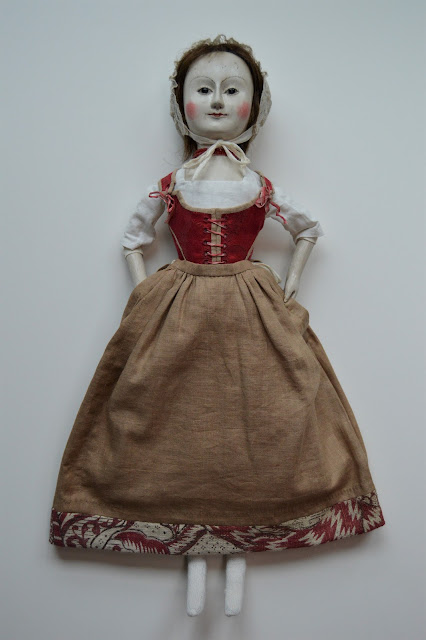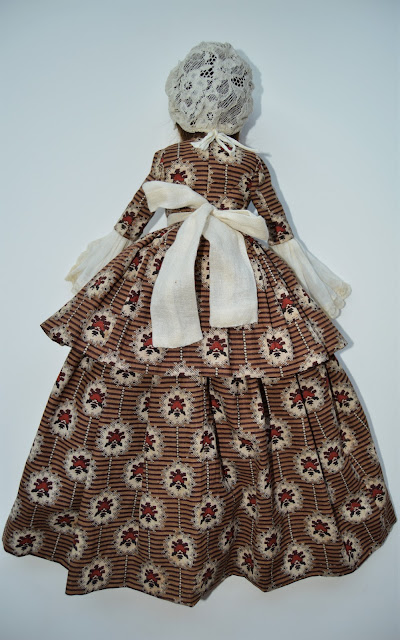I am pleased to introduce you this lovely wooden doll inspired by an English fashionable doll from the late 17th century. She is dressed head-to-toe in historical clothing! There are just a few survivors of these types of dolls, particularly this one, which would have been carved by an exceptional craftsman of that era. And here pops two big questions: Where these Pandora dolls were made and what was their function, why were they dressed in such luxurious garments, and showing the latest trends in fashion ?
Just if you missed the Salon, these were two of the interesting subjects we talked about in the Salon Series: "Queens of Fashion", hosted by the Bata Shoe Museum in Toronto, Canada.
To answer the first question, for most of these dolls there is not an exact place where they were made, but there are historical researches and published articles about the origin of the first fashion dolls, they were made in France, specifically in Paris, as many fashion historians call it " the cradle of the fashion industry of the 18th century"
About the second question, these little dolls that travelled miles and miles across Europe, had one purpose: Advertise the new creations of all the fashion makers, not only of the dressmakers, but cloth merchants, jewelers, shoemakers, wigmakers, you name it!
I think it was the most ingenious and lucrative idea of the French makers, not only boost their sales locally, their business had such a demand all across Europe that made them the Emporium of the 18th century fashion, inevitable to elude by the French and British courts and anyone related to the aristocracy!
This reproduction is my interpretation of a wooden Pandora doll from the late 17th century, one of my favorite dolls to reproduce!
She is 16 inches tall. I made her clothing and accessories with early materials and textiles, some of them dating back to the mid 19Th century.
As always, I have posted several photos for you to see step-by-step how I have dressed her and all the details of this doll. Enjoy!
SOLD
Here is a photo of her clothing and accessories that I custom made for her.
The shift or chemise plays an essential role because not only does it protect her clothing from the body moisture, but also will protect her from the roughness of some fabrics.
Silk ribbons are tied tightly around her legs, just above the knees, to hold up her cotton stockings.
The dickey petticoat is the second layer of skirt, worn for warmth and modesty.
Her stays are made of a late 19th century silk brocade in a lovely cranberry red color.




















No comments:
Post a Comment